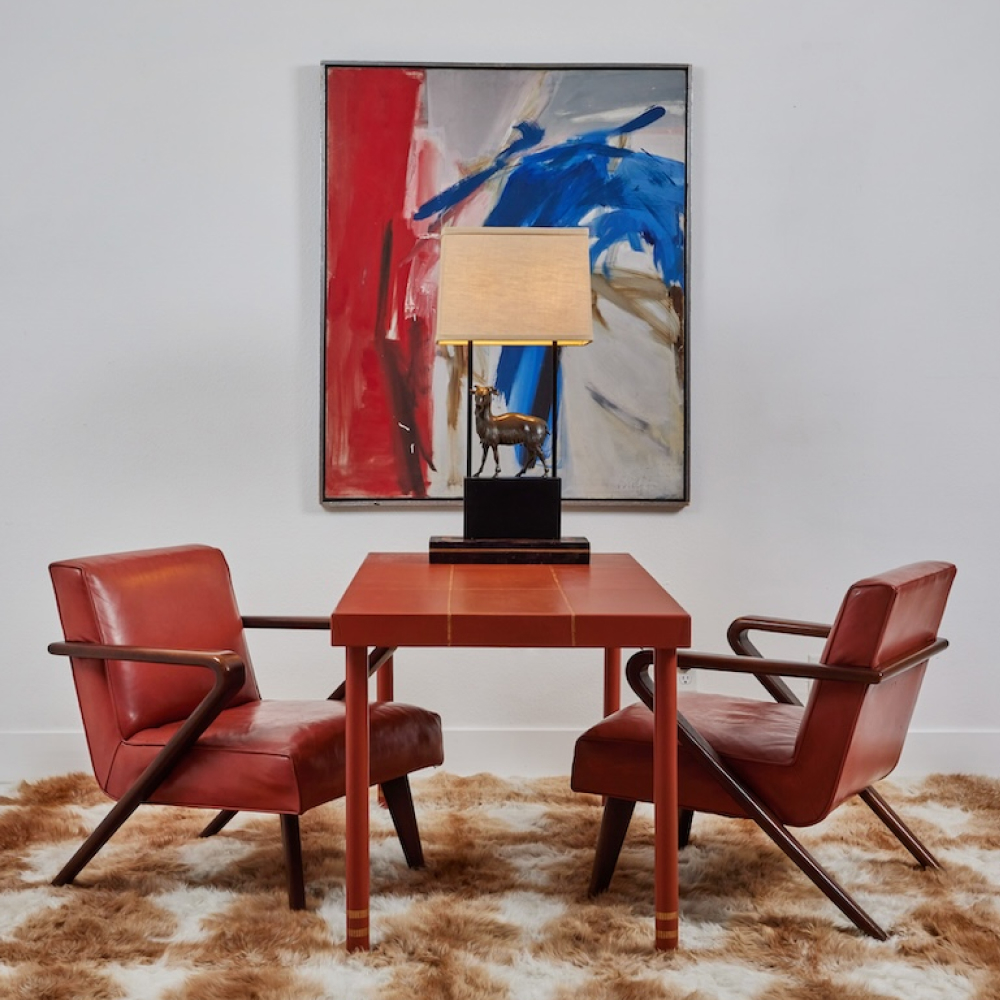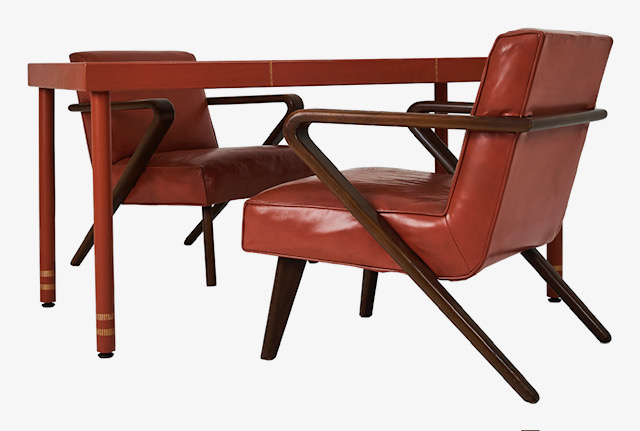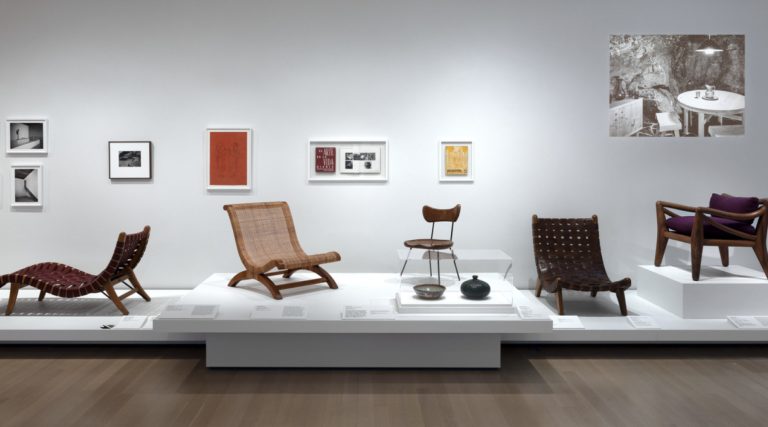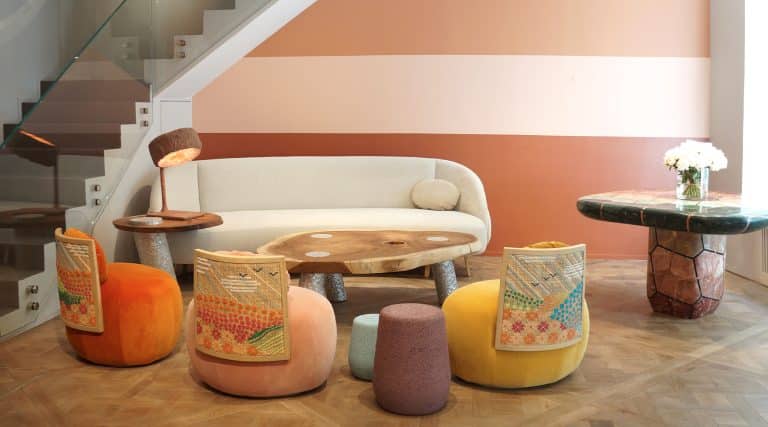February 18, 2024In an unmarked storefront behind his namesake gallery in Palm Desert, California, Patrick Dragonette dramatically undrapes an exquisitely detailed backgammon table from the estate of actor and Hollywood photographer Jean Howard. A gleaming confection of Bakelite and gold-tooled leather, the 1940s piece was custom made for her by William “Billy” Haines, the film star turned designer often credited as an architect of the style now known as Hollywood Regency.
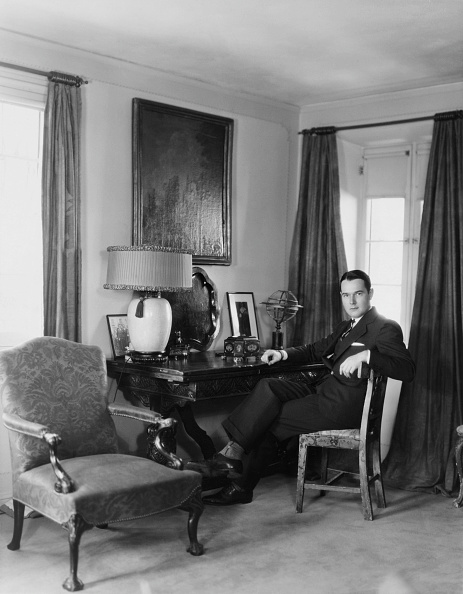
“Look at this,” Dragonette says reverently, indicating the square Bakelite tiles that adorn the tabletop. “It’s just like the biscuit tufting Haines used to upholster sofas.” He points to an example nearby: a three-piece sectional nearly 13 feet long that he had painstakingly reupholstered in a melon-hued linen, re-creating the square quilting of Haines’s original.
A 25-year Haines scholar and collector, Dragonette has decorated his own home with pieces by the designer, who created interiors and furniture for movie royalty, moguls and society philanthropists like Betsy Bloomingdale, Frances Brody and Leonore Annenberg. Haines has had an indelible impact on the gallerist, who also designs interiors and furniture. “Haines taught me that creating symmetry and mixing periods are two keys to successful interiors,” Dragonette says. “And his work inspired my own design, the Lauren chair, which I describe as Billy Haines meets Grosfeld House [the mid-20th-century furniture designer and retailer with showrooms in New York, Los Angeles and Chicago].”
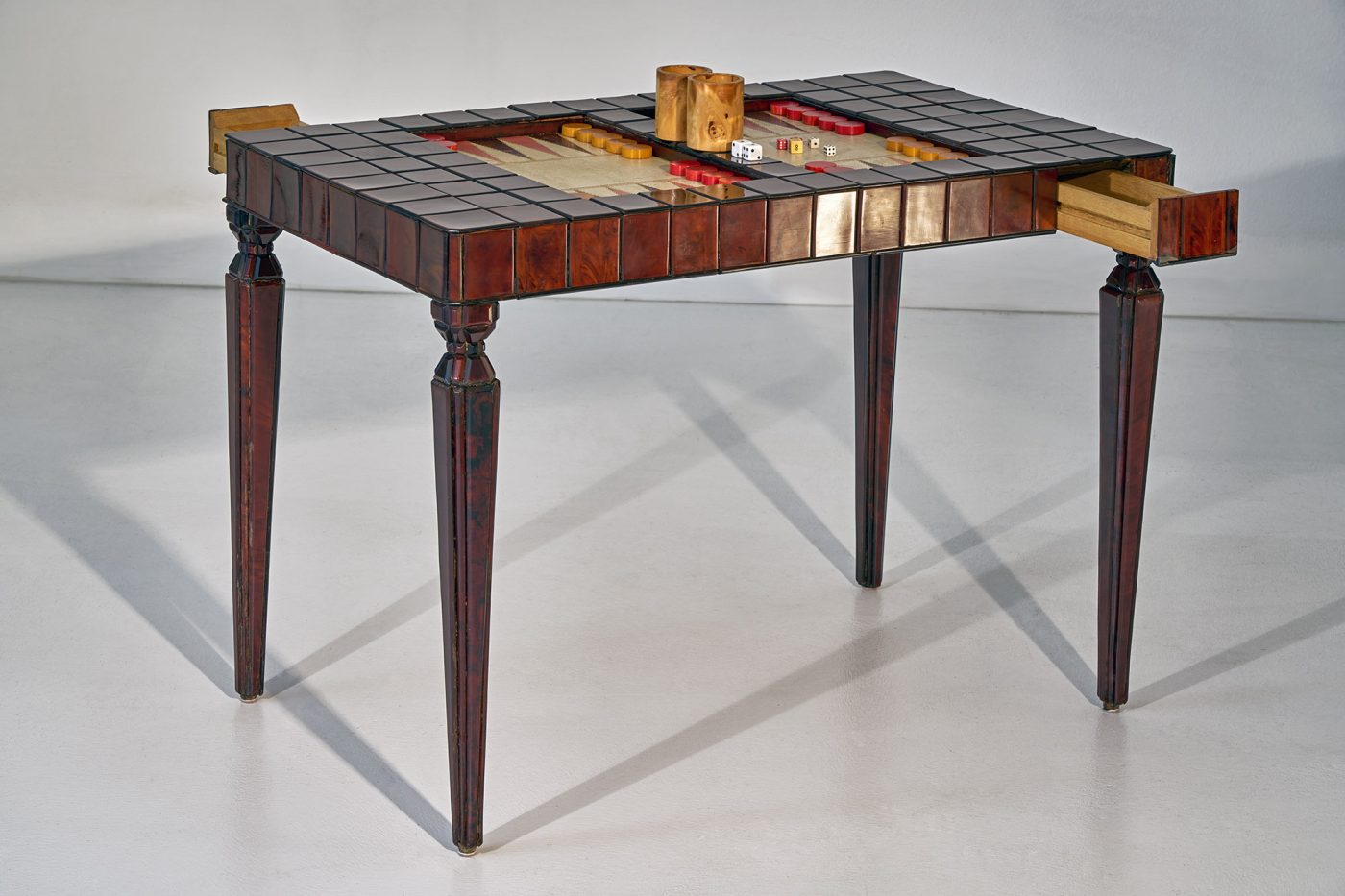
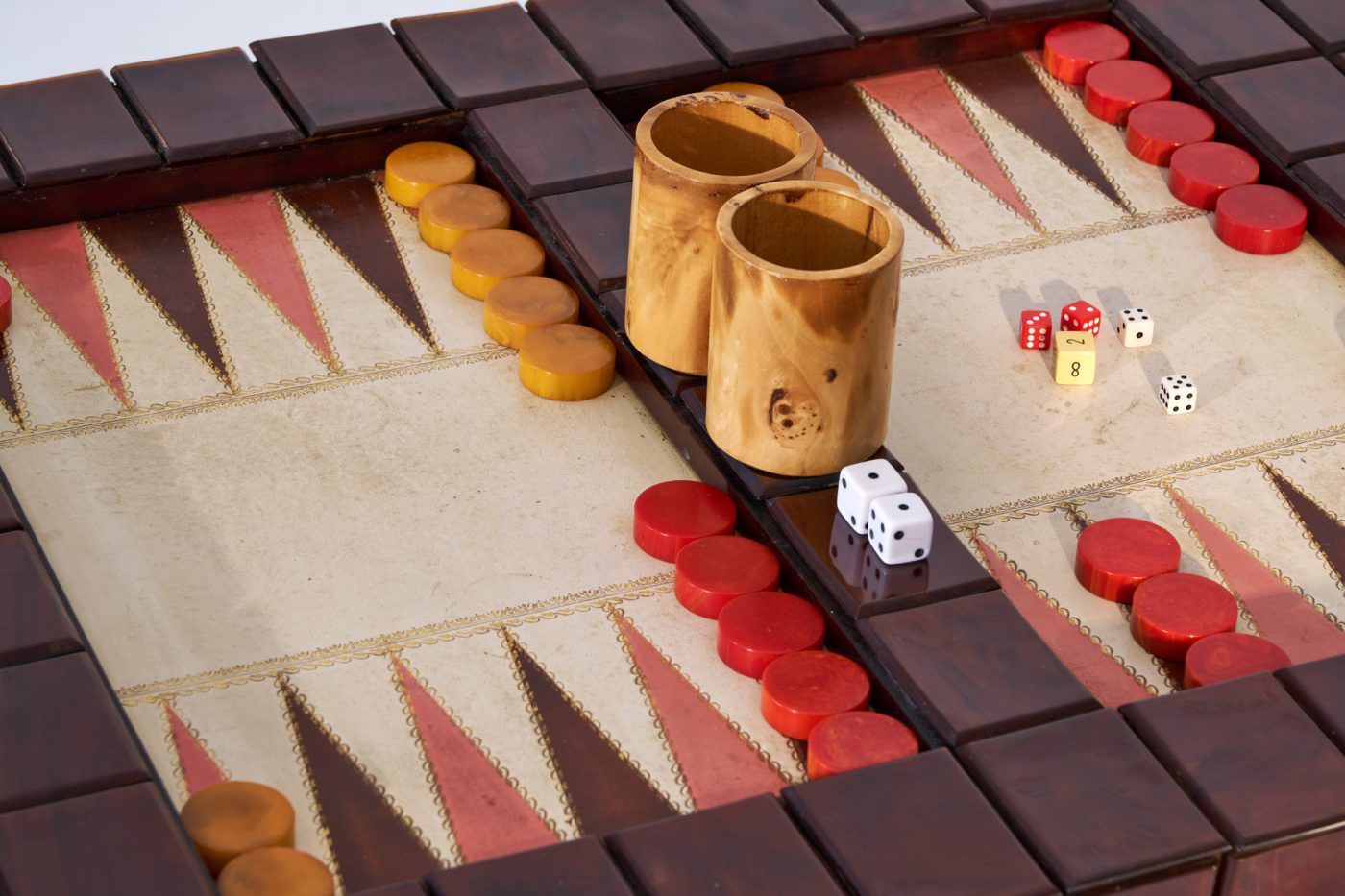
Last year, Dragonette was tapped by Sunnylands — the 25,000-square-foot Annenberg estate in nearby Rancho Mirage, designed by architect A. Quincy Jones and with interiors by Haines — to share his expertise for the exhibition “Variations to a Theme: William Haines at Sunnylands.” The show, on display in the Sunnylands Visitor Center through June, features rarely seen Haines pieces from rooms that are not part of public tours of the house.
This month, as part of Palm Springs Modernism Week (running through the 25th), Dragonette is joining Sunnylands historians for “If You’re Designing Modern, Use the Past,” a panel discussion about Haines’s work at the Palm Springs Art Museum on February 20.
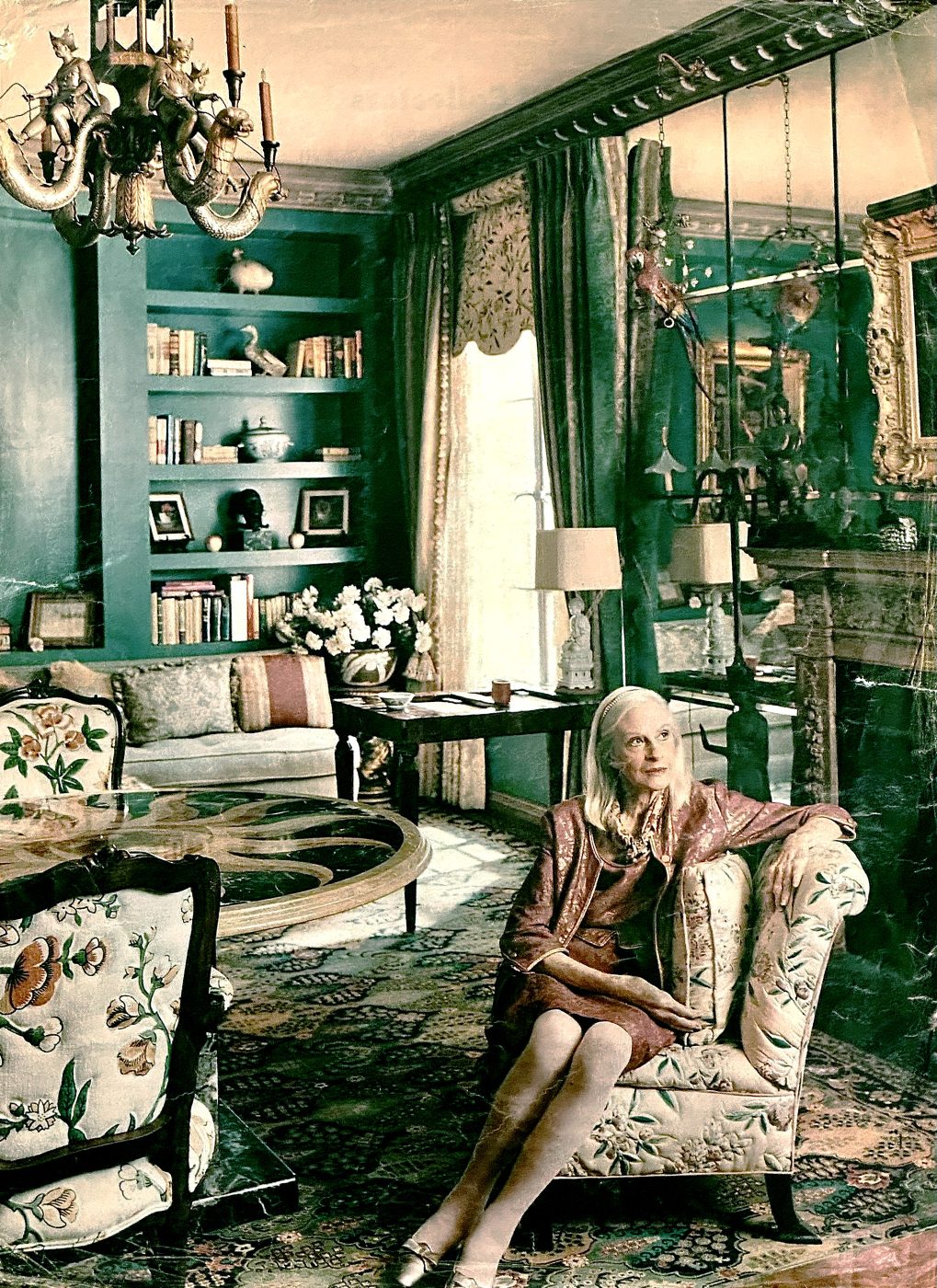
In addition to the backgammon table from the Jean Howard estate, Dragonette recently acquired custom pieces Haines designed, as well as antiques he selected, for a Bel Air estate. The gallerist is displaying these along with paintings by Pascal Magal and Prince Monyo bronzes at his booth at the annual Palm Springs Modernism Show & Sale. (All the items are also available through Dragonette’s 1stDibs storefront.)
Here, Dragonette walks Introspective through the Haines pieces on offer, singing the praises of the designer’s extraordinary artistry and career.

What’s the story behind the Bel Air estate collection?
The house was a 1933 Georgian by Paul R. Williams, on an acre in the Bel Air neighborhood of L.A., owned by a formative member of the California Democratic party and often visited by presidents John F. Kennedy and Lyndon Johnson. In 1963, Haines put his spin on the house. About seventy-five percent of what I am offering on 1stDibs and showing at Modernism comes from that home.
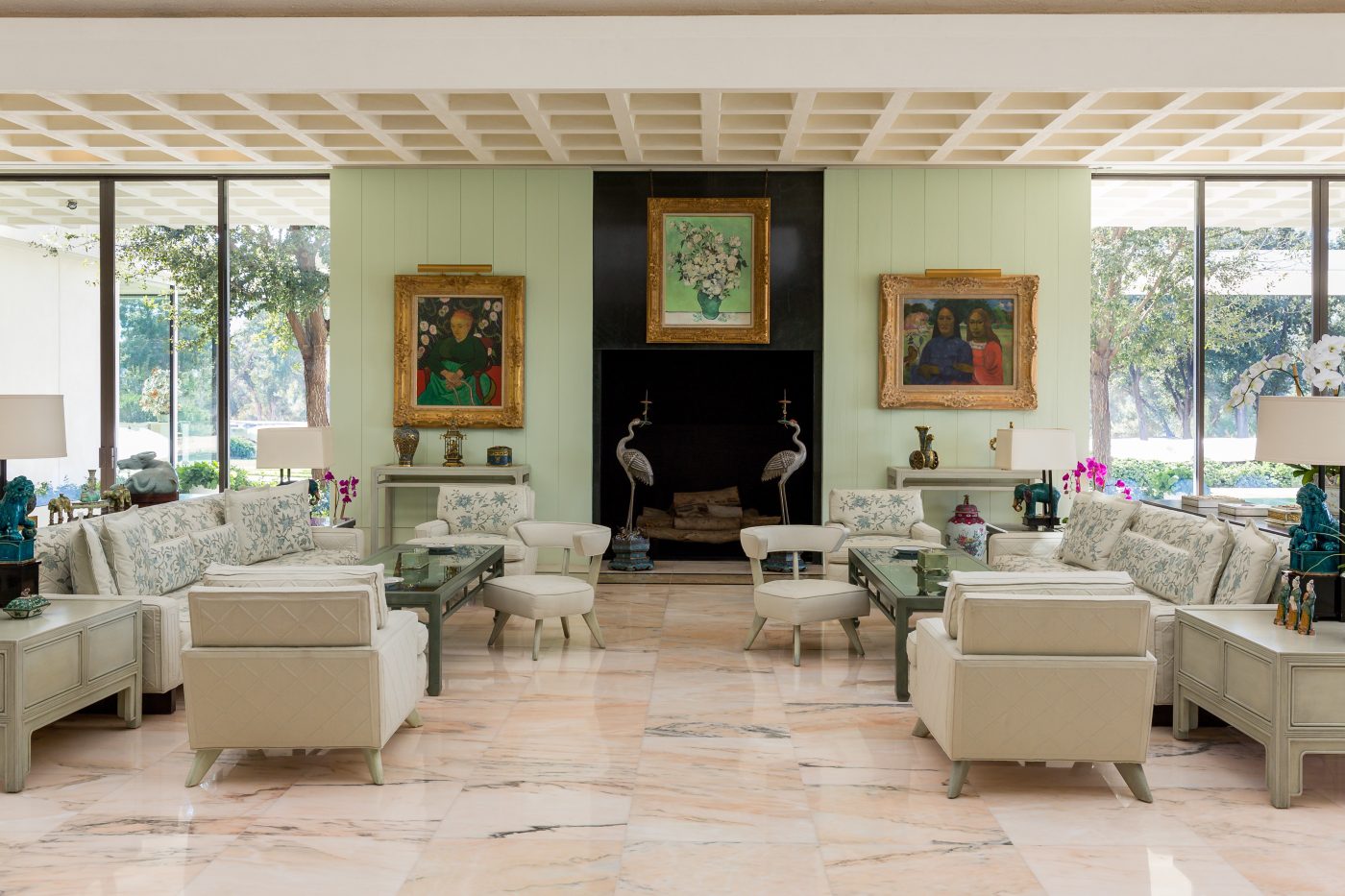
What are some highlights?
The Bel Air estate had beautiful pieces that showcase Haines’s love of antiques. For dining rooms, he was a big believer in candlelight, and from this home, there are two Continental crystal and brass girandoles that sat on fluted column pedestals. Over the living room fireplace, Haines hung an elaborately carved turn-of-the-century faux-bois mirror, and there are two other monumental mirrors of his own design, incorporating antique polychrome European panels.
He was a genius at repurposing antique pieces like those. For this home, he used carved relief panels — likely English from the eighteenth-century and also on offer — with floral swags and portrait cartouches to make a pair of six-foot-long consoles, topping them with slabs of golden-hued travertine.
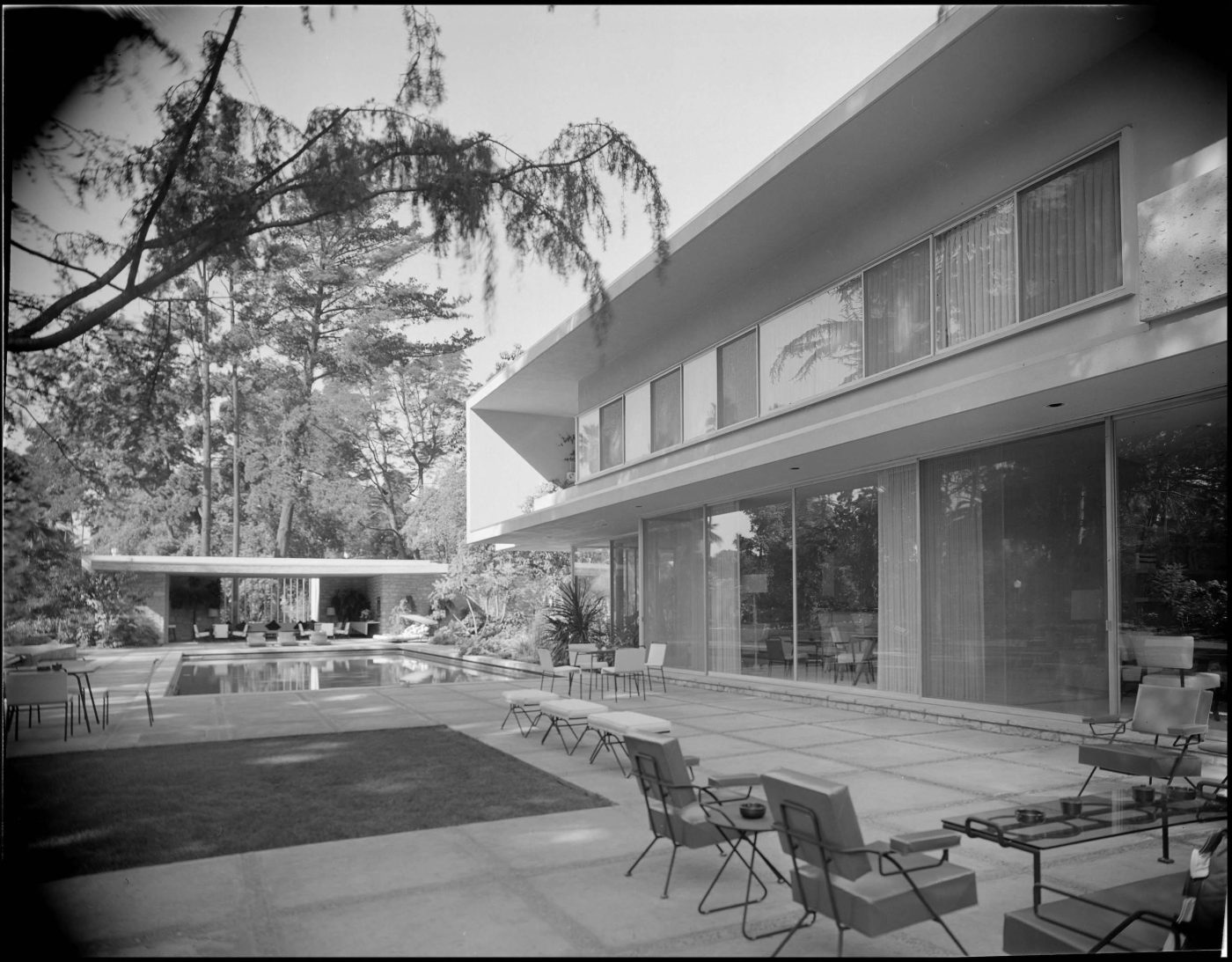
How did he approach modern design?
He created furniture that was stylish and highly functional. Take the Bel Air house’s trapezoidal wall-hung credenza that wraps around the corner of a room, which I’ve got on offer.
And he wasn’t afraid of color. There’s a chartreuse-hued wooden side table in the Modernism sale with an enameled base and leather-wrapped top. The piece has one U-shaped leg and one turned leg and the top tapers from a wider back to a narrower front. The subtle genius of it is that when you place a pair of his classic ledge-back Seniah chairs — like the ones I have at Modernism — next to that table, the people who sit in them are angled toward one another.
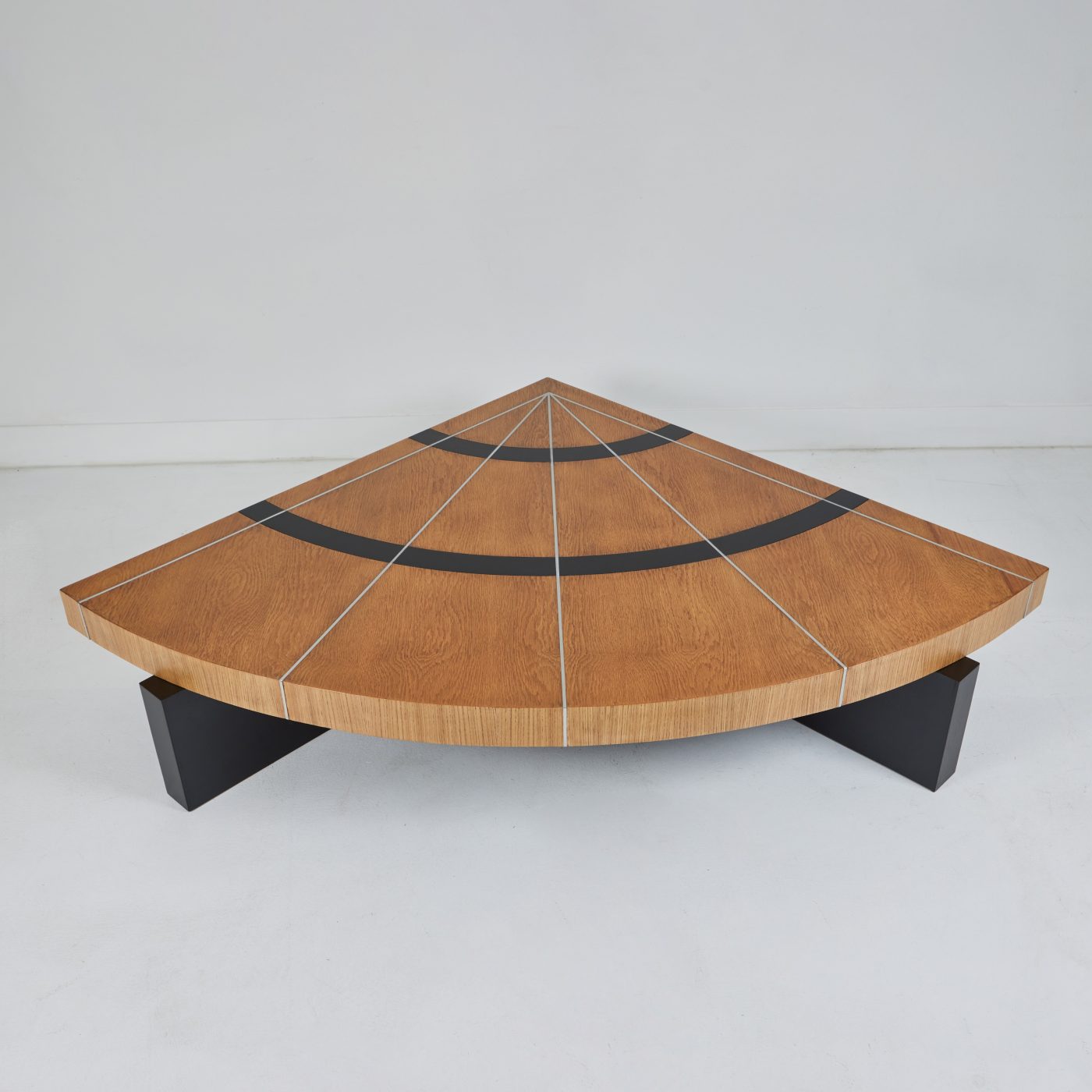
Is there a story behind that marvelous quarter-circle coffee table?
I’ve never seen another table like this one, and I don’t think anyone ever will. Most of his pieces were one-offs designed specifically for the client. In this case, it’s five feet by five feet with a radius edge made of ash with ebonized mahogany and aluminum stringer inlays on a super-simple geometric base. The heirs to the estate were going to throw it away, and I intervened and saved an important part of design history. And all it needed was a little TLC.
When did you first become aware of Billy Haines?
In the late nineteen nineties, David Geffen bought the Los Angeles estate of Jack Warner — of Warner Bros. fame — and hired Rose Tarlow to redecorate it. Everything Haines had designed for the house went to auction, and a friend bought a pair of Brentwood hostess chairs he wanted to consign. I had no idea who Haines was, but thought they were the sexiest chairs I’d ever seen. And after I sat in them, I thought they were the most comfortable, too. The pitch was perfect, and I could easily rest my arm over the back.
Those chairs were my initiation. And Haines became my obsession. I made it my mission to learn everything I could about him and champion his work.
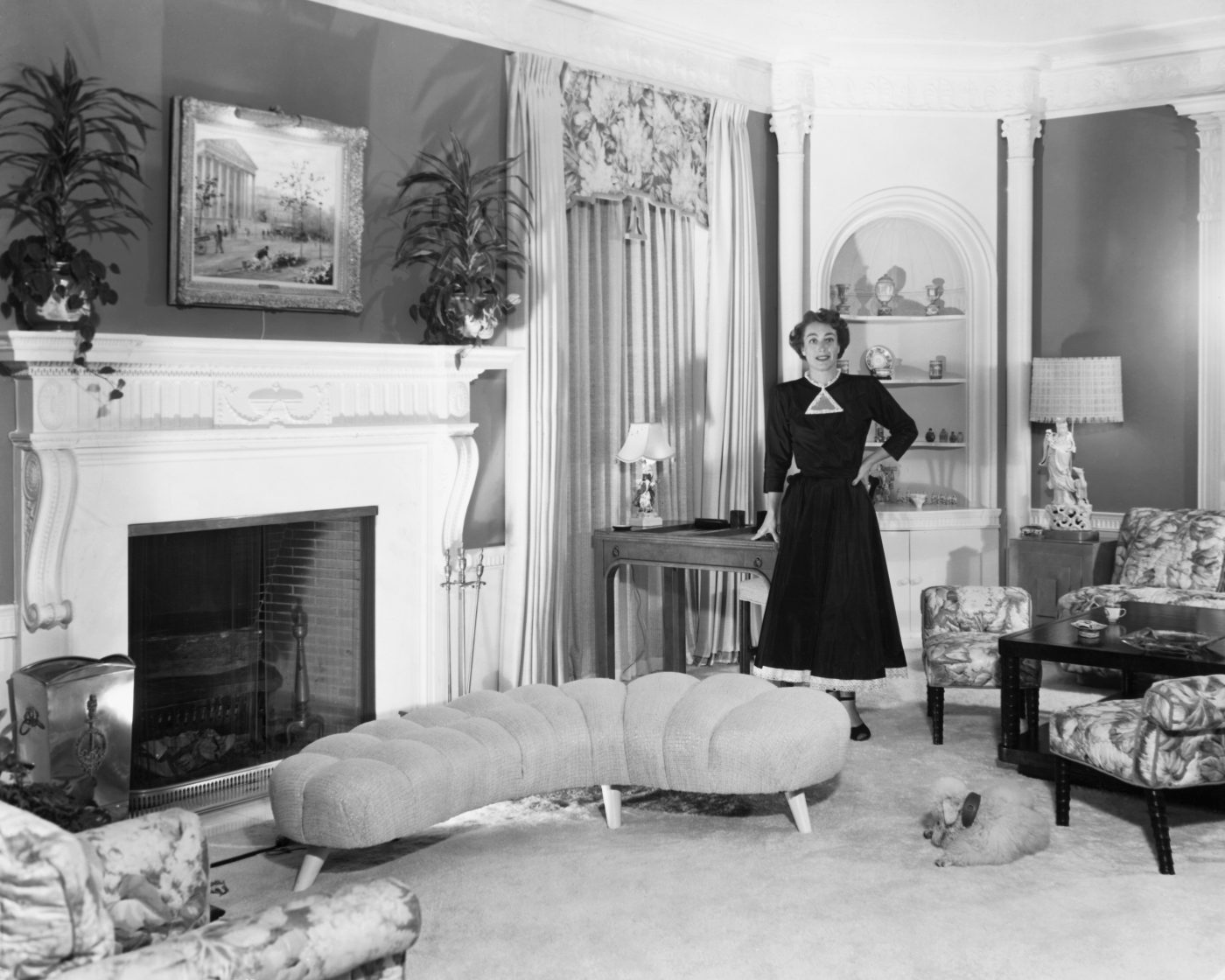
What did you learn?
He was an MGM actor in the nineteen twenties and thirties but was fired because he was in a long-term relationship with a man, his lover Jimmie Shields, that he wouldn’t give up. So, he opened an antiques store, and Joan Crawford, his best friend, became his first interior design client.
He lived the life that movie stars and the wealthy of the time aspired to. He was attuned to how these people entertained, designing low sofas and hostess and slipper chairs to show off women’s dresses and legs and creating versatile furniture like round tables that could be separated into demilunes and small benches and swiveling stools that could be easily moved around a room for parties.
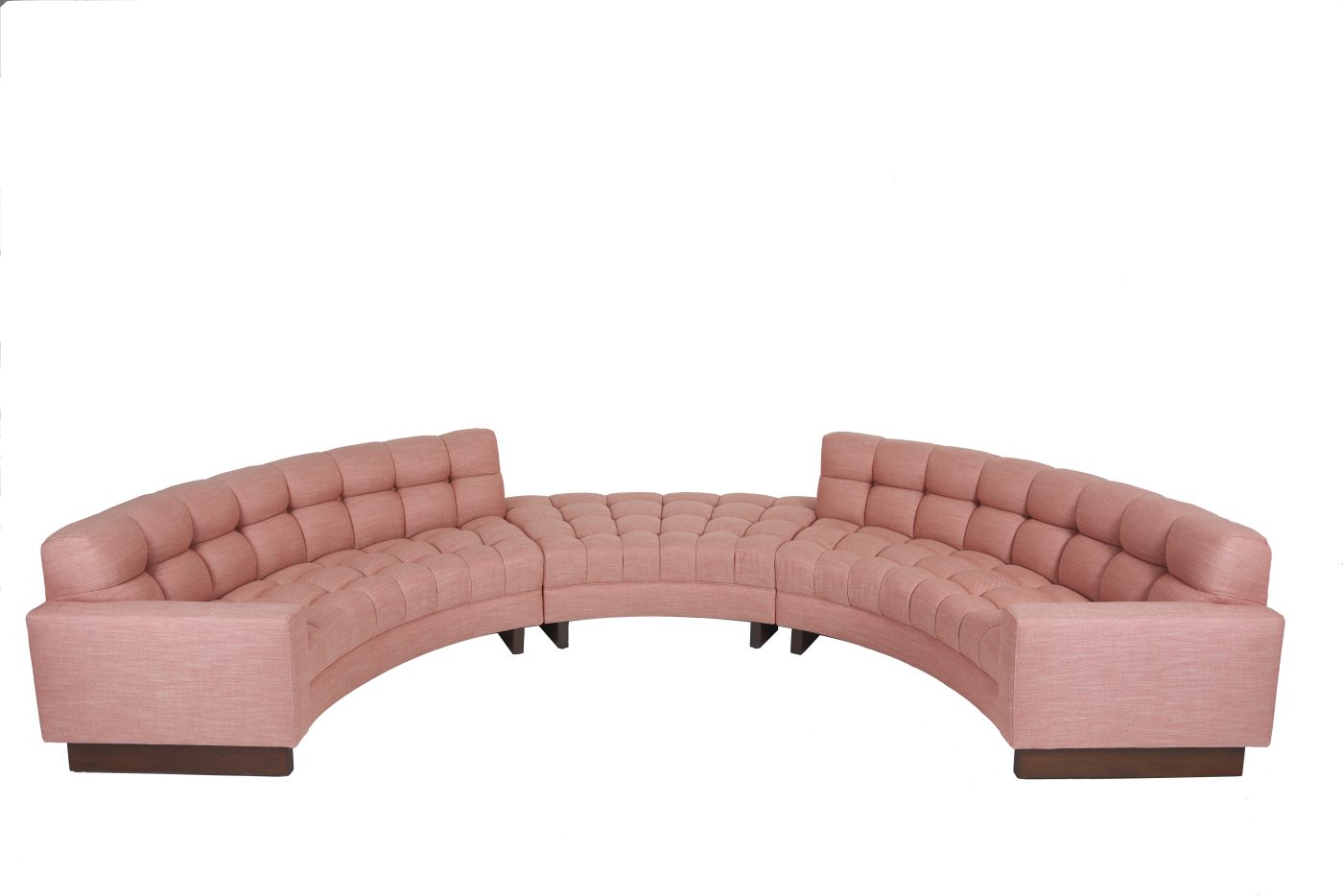
What are some other Haines design signatures?
There are so many. He created nightstands with tops that could be swiveled next to and away from the bed. Another staple was a two-sided desk or writing table that the client and their social secretary could sit at to go through correspondence. I have one on offer from the Bel Air estate that is leather wrapped with gold tooling, plus matching leather and walnut chairs.
I also have the lamp that sat on that table, a nineteenth-century sculpture of a rearing horse, which Haines had mounted into a modernist armature. That’s something he did with various objects, including beautiful Han and Qing dynasty porcelain pieces, which made them functional rather than just decorative.
Most of his clients played cards, so another signature is games tables. His were low-slung, and he called them “gemütlich,” from the German for “comfortable.” There’s one in the sale with a hand-carved neoclassical dolphin base and a tooled-leather top.
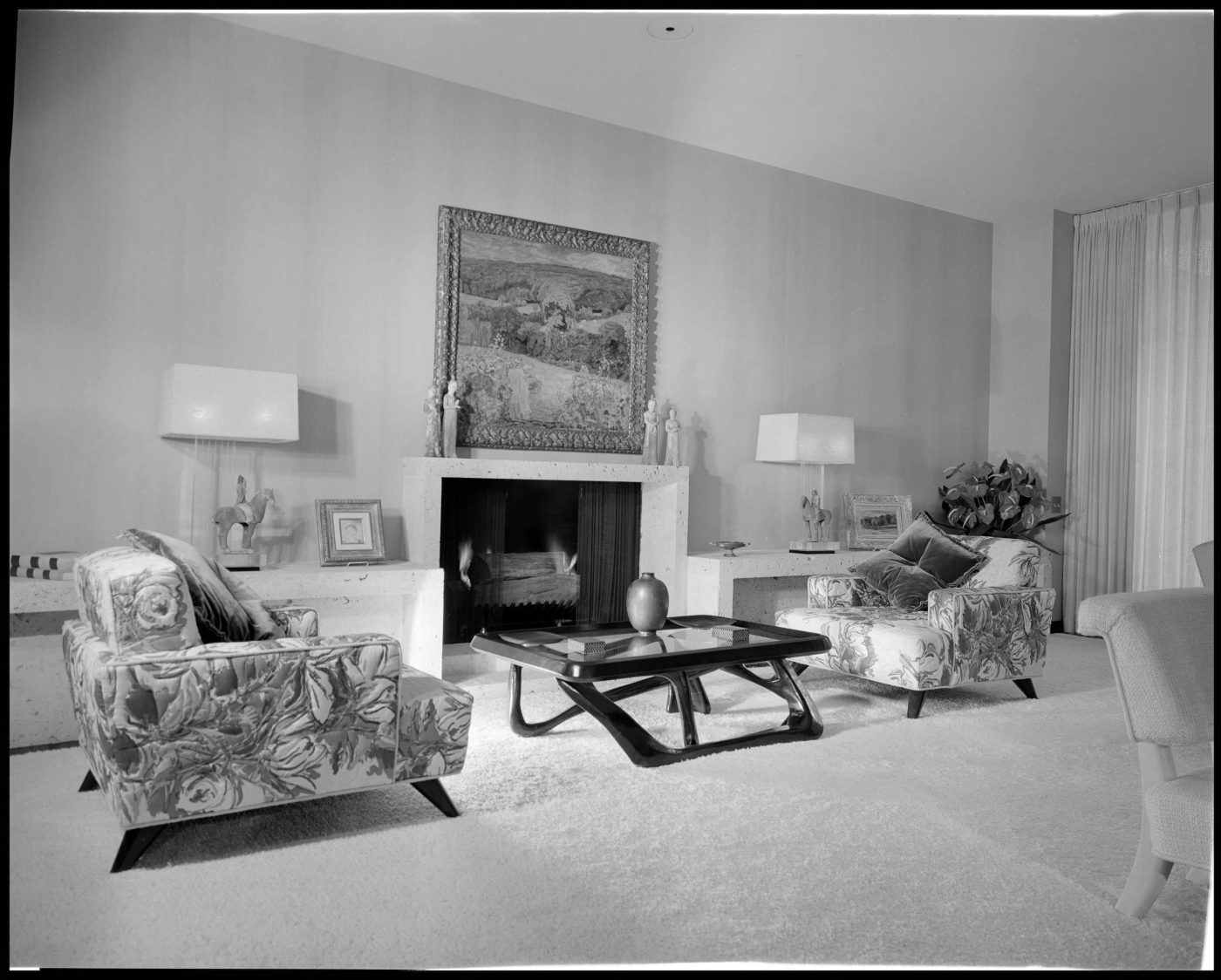
How about his interior design signatures?
His style was a sophisticated mix of Hollywood glamour and modern design and comfort, with a look back at the past, especially European antiques. He’d use a Regency dining table, but instead of surrounding it with not-that-comfortable Regency chairs, he’d design modern dining chairs that you could sit in for hours.
Haines had an eye for beauty from all eras. He collected antiquities and was educated in that through William Randolph Hearst, whose mistress, Marion Davies, was one of his leading ladies during his days on-screen.
What makes his pieces collectible now?
First and foremost, it’s the finite nature of the work. He never designed furniture commercially like some of the mid-century legends I admire, including Paul Laszlo, who worked for Brown Saltman; Tommi Parzinger, who did table accessories for Dorlyn Silversmiths; and T.H. Robsjohn-Gibbings, who had lines with Widdicomb, Baker and Saridis.
Like Samuel Marx, Haines only did bespoke work. You had to be a client, and when you look at his clients, you can imagine that presidents, industrialists, socialites and the who’s who of Hollywood sat on that furniture, so it’s imbued with history. I imagine Judy Garland, who lived next to Jean Howard, probably played backgammon on that table.
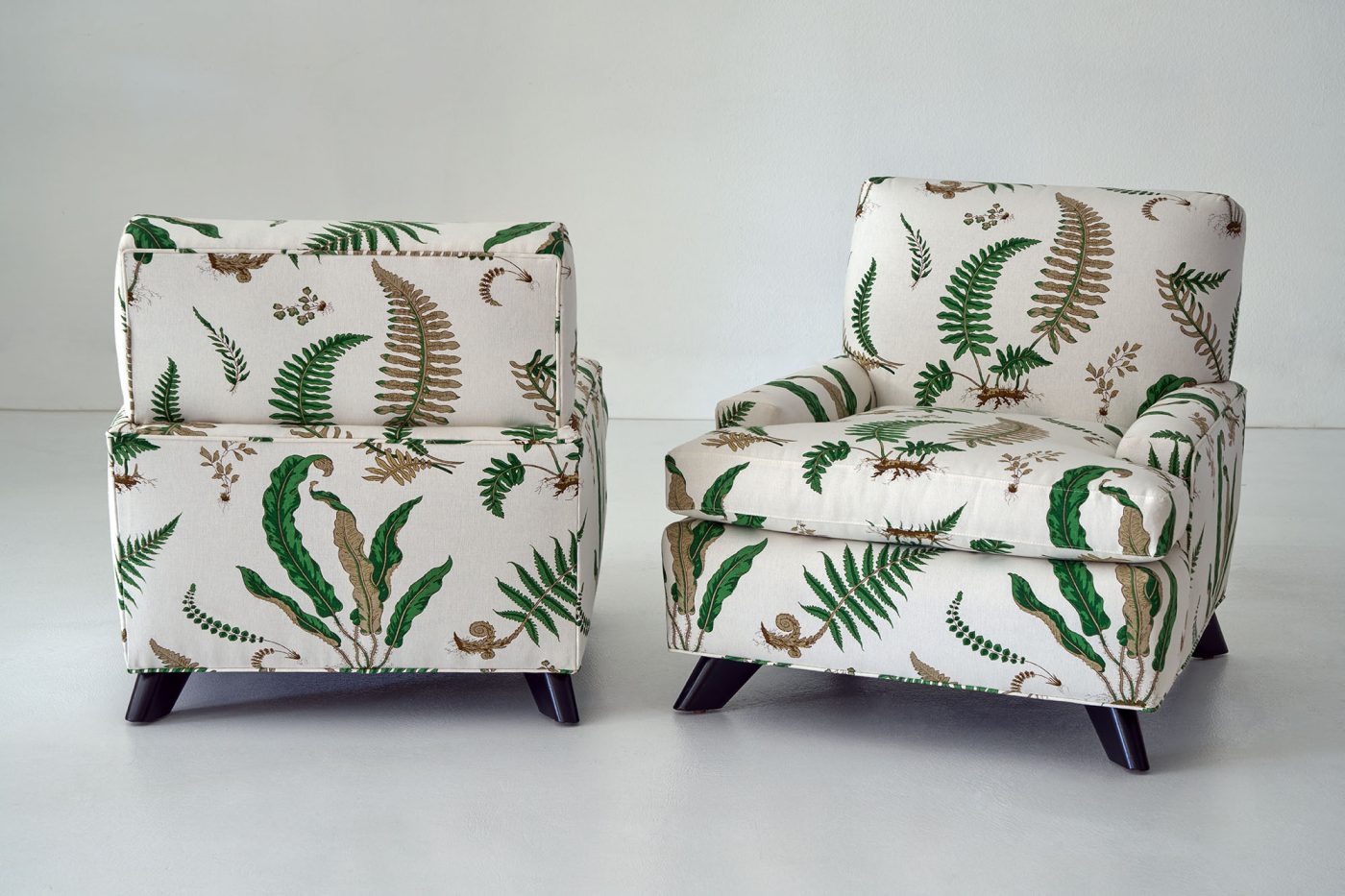
Do you think his work will continue to appreciate?
I believe his pieces are worth more — who else leather-wrapped a coffee table, for goodness’ sake? There’s a part of me that can’t understand why a Jean Royère sofa sells for $250,00 at auction but a lot of people think a $25,000 Haines sofa is overpriced. To those people, I would say, “Stylistically, the two are different, but in terms of the quality of design and exclusivity, they are identical.”
